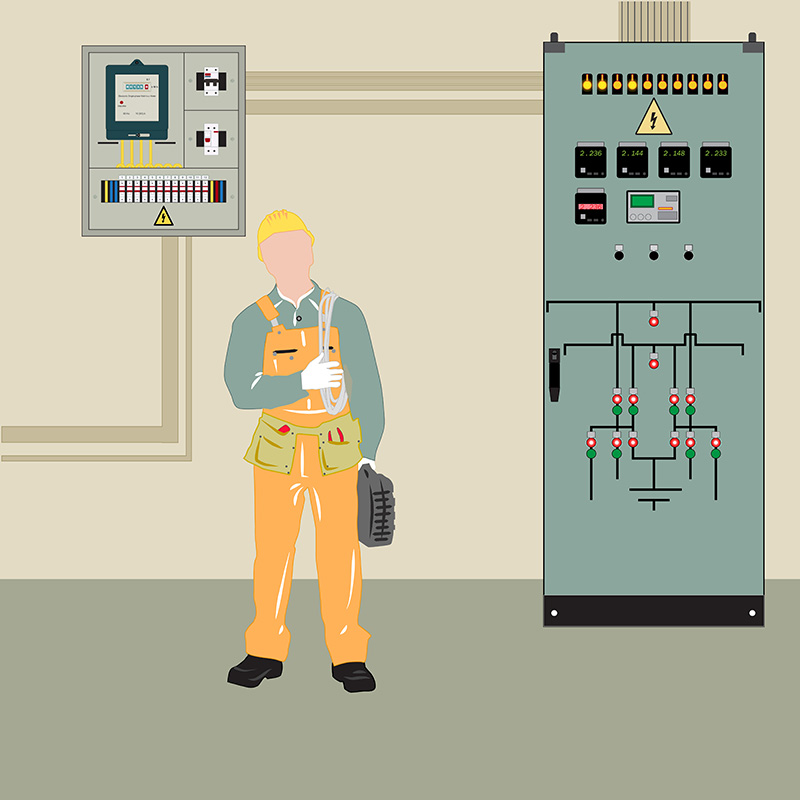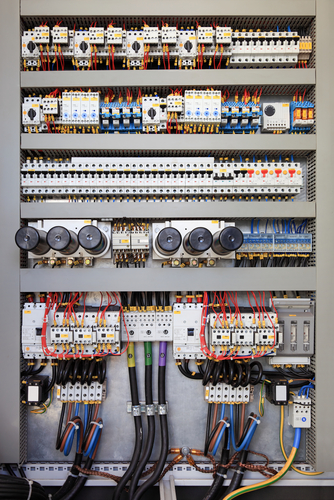Virtually all of us live our lives free from the worry of circuit overloads. We know that if an overload occurs, our circuit breakers and panels will trip off, save the circuitry and avoid huge damages.
However, many homes and old facilities were built decades ago, some going back to the 1960s or even earlier. Due to their age and outdated mechanisms, these older breaker boxes with dated circuit breakers may not trip.
Regular electric circuit checks at any medium or large-sized facility, including ensuring that the electrical panels and circuit breakers function as designed, are important. Sometimes, a faulty circuit breaker or perhaps an outdated panel and main breaker will be discovered.
How do you determine if installing replacement circuit breakers in these instances serves your purpose better than replacing a single worn-out circuit breaker?
Pros for Panel Replacement
Most licensed electricians and industry professionals agree it is safer and more economical to install a new breaker panel, even if the panel has only one worn-out breaker. The exception is if you plan to remodel and install a new panel within a year. In that case, replace worn-out circuit breakers rather than a whole panel.
Let’s go through some of the reasoning from our professional electrical contractors as to why a single faulty breaker may call for a complete replacement of the panel.
The Cost and the Effects of Aging
It is much less expensive to replace a single circuit breaker. However, the cost depends not only on the circuit breaker you must replace but also the overall electrical circuit. Many homes, warehouses and businesses have panels that were designed decades ago with some margin or flexibility.
Over the years, circuits and devices are added to the load of the panel contributing to the amperage. The electrical wiring may be worn, and this may cause a short circuit.
Overall, the cost to replace the breaker ranges anywhere from a few hundred dollars to about two thousand dollars. For a few hundred dollars more, you can purchase an entire panel. On average, a replacement circuit breaker panel for the heaviest loads costs just under $2,000. The general costs to upgrade electric panels remain much lower than most people initially believe.
Even though circuit breakers often last for as long as 70 years, eventually parts will wear out. Once they do, installing a replacement circuit breaker rather than an individual circuit will save you the time, trouble and costs of replacing the rest of the individual breakers.

Safety and Peace of Mind
You can’t put a price on safety and peace of mind. This argues for updating your panels with more modern technology. Take for example the panels built in the last few decades. They have more built-in safety features, such as greater sensitivity and quicker tripping mechanism.
Some facilities still employ panels from the 1980s or earlier. These panels are prone to failure with the new circuits, causing breaker trips and power supply problems. The older panels may not have the flexibility to permit new installations in your circuit. Upgrading may not be possible.
Older circuit panels may not have the bandwidth for all the electrical devices and electrical equipment that most people and businesses have today. For example, perhaps you decide you want to install a new garage and workshop, and want electric heating, or maybe you want to purchase an electric car that requires nightly recharging. An older panel may not have the capability to accommodate the additional workload and may be unsafe if additional amperage is added to the load.
Safety is paramount to electrical contractors and others working in this field. They choose to install replacement circuit breakers, rather than replace or upgrade electric panels and circuit breakers every few years based on unforeseen needs.
Cons for Panel Replacement
Many electrical contractors, businesses and home owners report that their old panels work flawlessly with new circuitry and new circuit breakers. Some contractors during an electrical inspection will tell you, “If it ain’t broke, don’t fix it,” and suggest you leave old panels in place if they still work well.
There is some truth to this line of reasoning. The construction methods in the past produced highly durable and sturdy electric panels and circuit breakers, built to last.
Circuit breakers manufactured in the last few decades use plastic casings and parts. These newer plastic models have not been in place for 70 years unlike the older versions. The trepidation expressed by some actually have some merit. The longevity of the panels due to materials used and possible break-down of the technology now built into the units,

Finally, you can make a good argument, given how long the older panels last, that it is more convenient and more economical to purchase older, quality replacement circuit breakers and panels, employing them to meet your needs.
Conclusion
Want to avoid electrical problems? Then it’s important to determine if you need a new main circuit breaker or use your old one.
You have a lot of choices in replacement circuit breakers, all of them being good ones. The pros and cons do not indicate one option is better than the other.
